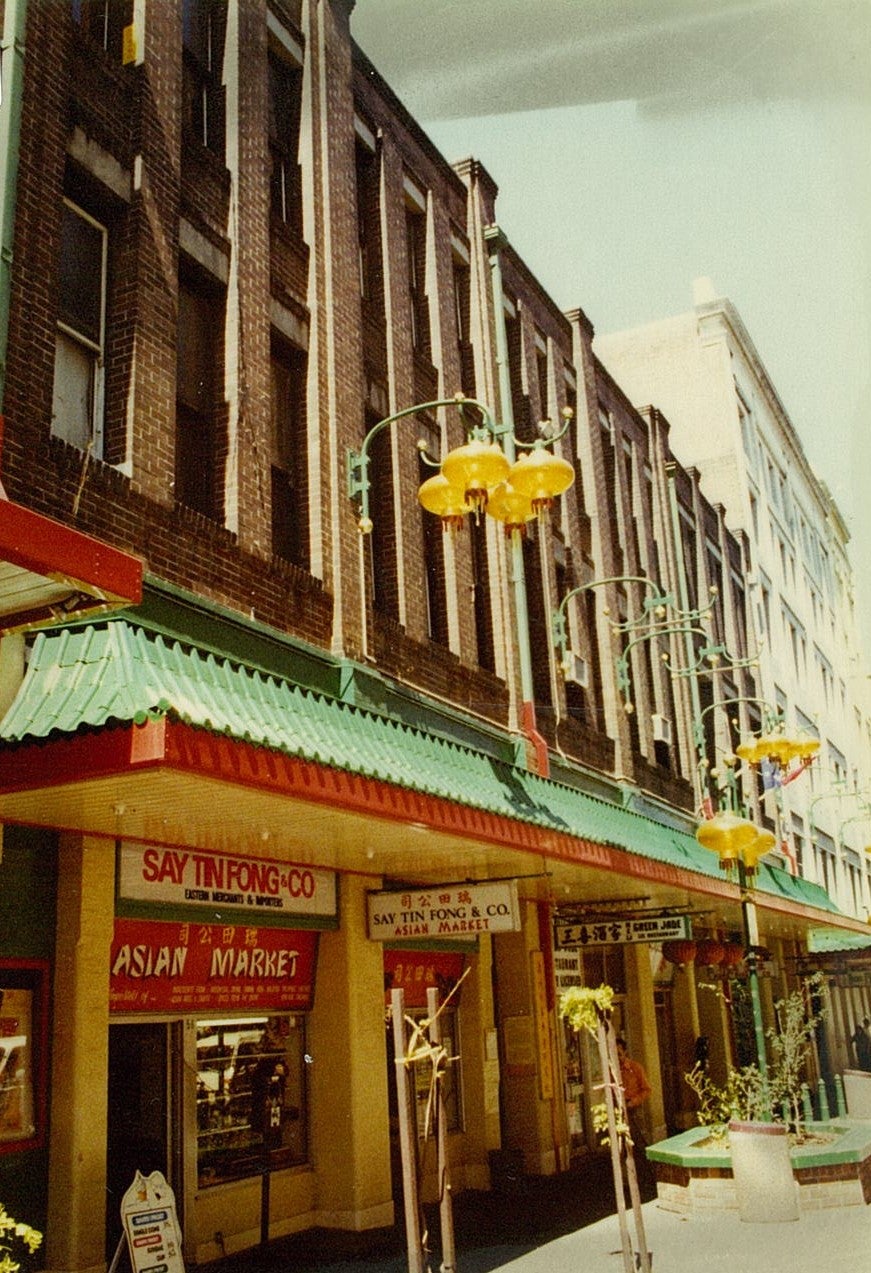Sydney’s Chinatown, in Haymarket’s Dixon Street, was originally a timber storage yard. Chinese people began to move into Haymarket in the 1920s, after the relocation of the large wholesale fruit and vegetable market to Hay Street and the slum clearance in Surry Hills. Proximity to the wholesale market also attracted many Chinese people to set up cook shops and lodging houses along Dixon Street, to cater for the suburban Chinese market gardeners who came to the city to sell their produce. Gradually, more restaurants, grocery stores, butchers and fruit and vegetable shops were opened to meet the needs of the Chinese population concentrated in the city area, and clan shops were developed to provide services to fellow clansmen; turning Chinatown into the centre of the Chinese community in Sydney.

King Fong's family grocery store 'Say Tin Fong & Co' was on 58 Dixon Street

The former Kwong War Chong on 82-84 Dixon Street was a clan shop for Zhongshan people in Sydney
In the early 1970s, Chinatown experienced a decline following the relocation of the wholesale market to Flemington in 1968, and increasing relocation of residents from Chinatown to the suburbs. In an attempt to revitalise Chinatown and promote the adoption of multicultural policies within Sydney, the City of Sydney Council worked with the Dixon Street Chinese Committee to attract visitors by developing Chinatown into a tourist precinct. In the 1980s, Dixon Street was turned into a pedestrian mall. Traditional Chinese-style arched gates were established at both ends of Dixon Street; traditional symbols such as stone lions, lanterns and a Chinese-style pagoda were used to redecorate Chinatown, and properties along Dixon Street were converted to Chinese restaurants, supermarkets and gift shops.

The Dixon Street Chinese Committee worked with the City of Sydney Council on the re-development of Chinatown in 1980

The 'orientalised' decoration in Chinatown in the 1980s

The ceremonial arches in Chinatown was erected in 1980 (photo courtesy of Mr King Fong)
The revitalisation of Chinatown coincided with the growing number of Asian migrants to Sydney since the 1980s. Many Asian migrants set up different restaurants and businesses in Chinatown. The construction of the Sussex Centre and the refurbishment of Market City and Capitol Square—also contributed to a booming retail sector in the area. Chinatown has gradually transformed from an ethnic enclave to a vibrant and cosmopolitan hub with strong and dynamic connections with Asia. More recently in 2010, the City of Sydney has launched a number of initiatives, such as the Chinatown Public Domain Plan and the Chinatown Public Art Plan to improve the quality and attractiveness of the precinct. Intensive marketing campaigns were carried out to promote Chinatown as a character precinct for Asian cuisine and cultural experience in the city.

Asian shops and restaurants in Chinatown

Lunar New Year celebration in Chinatown (2014)

Public artwork 'In Between Two Worlds' in Kimber Lane (2018)
